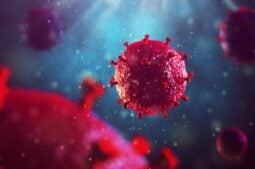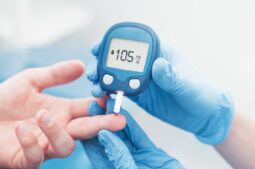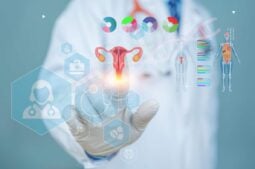
The beautiful complexity and delicate balance of the reproductive system are among the wonders of human biology. It would be impossible to claim that any one element was more important than the others because they all play an essential part, but it is true to say that without ovarian follicles there could be no egg to be fertilised; without a fertilised egg there could be no embryo, no pregnancy and no little bundle of joy to culminate the process.
Here we’re going to take a closer look at the role that ovarian and antral follicles play in fertility and how a reduction in their number can lead to infertility. We will also explain why the antral follicle count is so crucial in the success of various infertility treatments like IUI and IVF. To start at the beginning: what is an ovarian follicle and what are antral follicles?
Ovarian follicles – what are they?
Every woman on the planet was born with all the follicles she will ever have. These formed in the ovaries during the foetal development stage and at birth there could be anything between 600,000 and 1,000,000 ovarian follicles. At this stage they are not eggs but primordial follicles and there is a long process to go through before they mature.
- Primordial follicles measure only 25 micrometres and are impossible to see with the naked eye. This is the stage of all follicles inside the ovaries at birth.
- Primary follicles follow with the onset of puberty, with a few primordial follicles developing to the primary stage each and every day from puberty to menopause.
- Secondary follicles develop as part of each monthly cycle, and start to grow in size with additional cells which secrete hormones.
- Tertiary follicles, also known as antral follicles, are the all-important stage where they have developed far enough to be surrounded by a fluid-filled sac called the antrum. They are now large enough to be observed via an ultrasound scan and measure between 2 and 10 mm. An antral follicle of 5 mm is 200 times larger than a primordial follicle. At this point they also start to secrete anti-Mullerian hormone (AMH). Measuring the level of this hormone in the blood is an alternative to an ultrasound scan to estimate your ovarian reserve.
- Graafian follicle is the final stage where the follicle has developed to the point where it can release a mature egg. Only one or occasionally two follicles reach this stage each month, the rest fade and are reabsorbed in a process known as atresia.
Why are antral follicles important for fertility?
It is natural and inevitable that the number of eggs remaining, which is the ovarian reserve, decreases with age. But there is no exact correlation between the two. Some women may have a low ovarian reserve, meaning they would have difficulty getting pregnant naturally, at an earlier age than the norm. For example, a woman with a very low ovarian reserve before the age of 40 may be diagnosed with premature ovarian failure. Even though counting the exact number of eggs left is impossible, an antral follicle count has been shown to be a good indicator of ovarian reserve.
This is important for two reasons. A woman who is unsure whether or not to wait a couple of years before trying for pregnancy may need the reassurance of knowing she has a good ovarian reserve, and conversely a low antral follicle count, showing a low reserve, may indicate that she should try sooner rather than later, or go ahead with freezing her eggs at an earlier age. Secondly, an estimate of ovarian reserve is important in predicting how well a woman will respond to ovarian stimulation used as part of a treatment for infertility.
What is a normal antral follicle count?
An antral follicle count of 15 is the average for a woman aged between 25 and 34. For a 35 to 40-year-old, you could expect an average of 9, falling to an average of 4 between 41 and 46 years. For any age, a count of 3 to 6 is generally considered low.
Why is the antral follicle count important for fertility treatment?
As an indicator of likely response to hormonal drugs to stimulate the ovaries, an estimate of ovarian reserve is very important. The test is carried out by transvaginal ultrasound and the technician physically counts the number of follicles they can see which have reached the antral stage. This is essential information for the fertility specialist to prescribe the level of stimulation appropriate for a particular patient. However, the number of eggs required is very different according to the fertility treatment in question.
Intrauterine Insemination (IUI)
This treatment involves injecting an optimised sperm sample directly into the woman’s uterus at the time of ovulation. Therefore a good number of eggs stimulated for IUI would be one or two, to avoid the risk of multiple births. If too many eggs are produced, your fertility specialist may need to cancel the cycle, ask you to refrain from sex and try again in another menstrual cycle.
For IVF treatment, however, generally the more mature eggs that can be retrieved, the better the chances of success. Anything between 8 and 15 antral follicles would be an acceptable number. You shouldn’t be disappointed if the number of eggs which are eventually retrieved after ovarian stimulation does not quite correspond with the number of follicles you’ve been told you have. This is because every follicle will not necessarily contain a good quality egg.
Finding out more about fertility treatment
Do remember that if you have been diagnosed with a low ovarian reserve, it does not necessarily mean that you can’t become pregnant naturally, or that fertility treatment won’t work. In fact, although there are no guarantees, in the vast majority of cases, we can help. You can contact us at IVI to find out more about tests, diagnosis, and which treatments may be appropriate for you.





Comments are closed here.